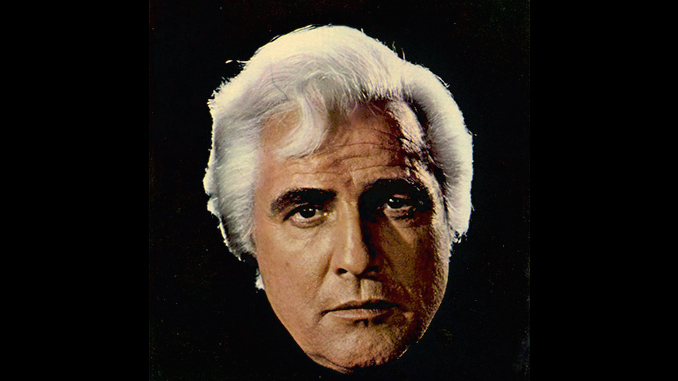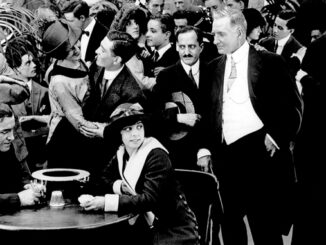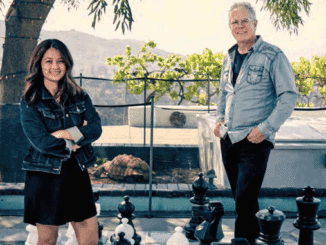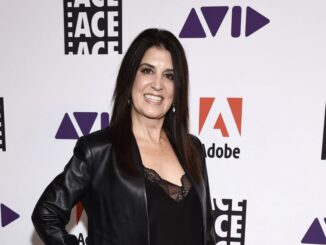
by Michael Kunkes
One of the most talked-about aspects of the new Superman Returns will undoubtedly be another return––that of Marlon Brando as Superman’s father, Jor-El. The actor, who died two years ago this July at the age of 80, originally starred in Superman: The Movie (1978). He appears in director Bryan Singer’s new story, not as the visionary scientist who sent his son off to Earth as Krypton’s sole survivor, but as a sonic guiding presence in the adult Superman’s consciousness, a voice of wisdom in his mind.
“For anyone who remembers the original, it just brings everything back,” says supervising sound editor/sound designer Craig Berkey. “Brando’s voice and presence serve as a memory bridge back to that time. You don’t have to sell the character at all.”
To accomplish this, the archivists at Warner Bros. and the sound and picture editorial crews on the show performed a, well, Superman-ian task of picking through hours and hours of ADR, dailies, outtakes and other sources to eventually deliver to the mix stage the audio presence of Jor-El (Brando does appear, briefly, during one sequence set in the Fortress of Solitude).
According to Elliot Graham, who edited the film with John Ottman, “Brando in Superman Returns represents Superman’s Kryptonian roots, and using his voice was a very familiar way of not only bringing in the Krypton storyline but also referencing the original movie. We use his voice in a way that is very respectful of the original source. It’s not a replacement; it’s more like an addition.”
The restoration story actually begins in Sydney, Australia, weeks before the start of production. On his arrival, the first thing Graham did (aside from overseeing some of the previsualization), was to spend a week going though the Brando footage and tape provided from the Warner Bros. Archives, including every take, blooper and performance––anything that could potentially be useful from the original performance. Says Graham, “Once we found what we wanted to use, the question became, ‘How do we clean up this 28-year-old footage and sound to make it fit into our clean, digital environment?’”
“You could never make the optical-sounding material sound like the ADR, so you had to make the ADR sound like the opticals. In a lot of ways, we were actually taking the quality down to match.” -Warren Hendriks
Also heavily involved at this early stage was first assistant editor Liza Espinas-Regnier. “For select scenes, Elliot had me go through copies of the original ADR recordings to find the original dialogue, minus all the reverb and other effects. Basically, all I could do was try to ear-match where the takes in the movie came from, because there were no notes and no picture with the originals,” she recalled.
First assistant sound editor Warren Hendriks was put in charge of the restoration effort. “Craig put together the whole plan for pre-dubbing, dubbing and what kind of layout we would use, so I didn’t have to worry about that at all as part of my responsibilities. I was able to focus entirely on building the Brando dialogue,” Hendriks explains.
“We received the voice tracks cut together from the picture department as OMF files, which we imported into ProTools,” Hendriks continues. But, he relates, it wasn’t nearly as easy as all that. “When the sound was originally archived back in the 1970s, they didn’t label it very well. Then, when it was digitized in LA and sent on to Australia, there were no sound reports to go by and the material wasn’t archived as correctly as it could have been. It was just a combination of a whole bunch of dailies and ADR that we had to sort through, line by line.”
Another huge problem was the lack of any accurate time code references for sync and phasing. “Because Superman Returns was shot digitally, it caused a lot of audio problems from beginning to end, especially with Brando’s voices” Hendriks says. “We couldn’t get any programs to work because the time codes were all off, so we had to hand-phase and hand-sync every single reel.”
Most of the time, finding the right line was like looking for a needle in a haystack. “When you have to find a single line of Brando saying, ‘Kal-el, my son,’ somewhere within hours of material, it makes for really long hours and a lot of luck to find the line when you have no way of checking scene and take numbers or timecode,” he explains. The best he could do was to find a matching performance and then see if that performance could match phasing and waveform to what was in the Avid tracks, a process that took weeks.
Archivists performed a Superman-ian task of picking through hours of ADR, dailies, outtakes and other sources to eventually deliver to the mix stage the audio presence of Jor-El.
Even when all the pieces were found and phased to the Avid tracks, Hendriks again went back to the original one-quarter-inch mag tapes in another attempt to find the cleanest possible source, a process that was repeated independently by the picture department as well. From there, the tracks were handed off to dialogue editor Helen Kuttrell, who spent several weeks cleaning up and clarifying the dialogue. After that, Brando’s voice became the province of Oscar-winning re-recording dialogue mixer John Reitz (The Matrix), who extensively utilized the high-end Cedar DNS1000 digital noise suppressor.
Ultimately, the combinations of source material made it necessary to find a happy medium between the optical-sounding dailies and the more pristine ADR recordings. “In a lot of cases, John was just working the tracks with EQ and the Cedar box, trying to get it as clean as he could without making it sound more futzed than it already was,” Hendriks says. “In some cases, where we had the full, clean ADR, we had to make it sound like the rest of the stuff. The two were worlds apart so you could never make the optical-sounding material sound like the ADR, so you had to make the ADR sound like the opticals. In a lot of ways, we were actually taking the quality down to match.”
“For select scenes, Elliot [Graham] had me go through copies of the original ADR recordings to find the original dialogue, minus all the reverb and other effects. Basically, all I could do was try to ear-match where the takes in the movie came from, because there were no notes and no picture with the originals,” – Liza Espinas-Regnier
Hendriks adds that the “internal dialogue” motif of Brando’s voice didn’t help the process. “It’s a situation where you shouldn’t be hearing anything but his voice. We’ve had to deal with tape hiss, optical noise and background noise from the original sets––even old ambient room tone––all sounds that don’t fit inside someone’s mind.”
Restoring Brando’s voice must have felt a bit like a sacred trust for the sound team. “The ADR tapes have some really long monologue speeches,” Hendriks says. “Sometimes Brando would mess up a line, would make a joke out of it and [original Superman director] Richard Donner was always right there, ready to laugh. Then they’d just pick it up and go again. There were loads of spots like that.”
“I never thought I’d be editing Marlon Brando,” Graham adds. “It was unique and exciting, but also a little bit strange.” One interesting aspect in Superman Returns was the casting of Eva Marie Saint––Brando’s co-star in On the Waterfront 52 years ago––as Martha Kent, Superman’s adopted mother. Although they shared no scenes together, seeing and hearing Brando must have been hard on the actress.
Berkey, whose recent shows as sound designer include X2, The New World and I, Robot, promises big things from the soundtrack of Superman Returns. For example, Superman’s heat vision will not be the kind of sci-fi, synthetic sound that past versions have used. “That one’s evolved a lot because visually, it’s changed a lot,” he reveals. “Part of the sound is made up of tiger roars, which we put through a tremolo plug-in––much as you would for an electric guitar, but with a lot of modulation.
“Superman’s flying sounds will also be a huge thing,” Berkey continues. “Because he makes no propulsion sound, the character of the sound is defined by anything that is affected by his movement, especially his cape. The bottom line is that we are not doing cartoony sound effects at all. Everything is done with a sense of realism.”
“At this point, I have most of Brando’s scenes memorized,” Hendriks says. “But it hasn’t helped my terrible impersonation.” The horror, the horror…
Superman Returns will just have to make do with the real thing.






